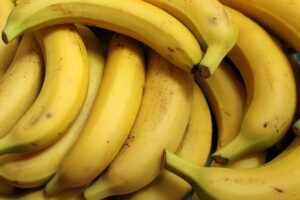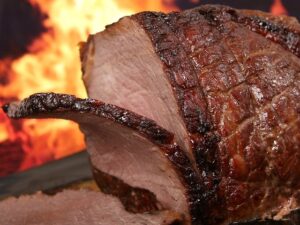Introduction
Carbohydrates are one of the essential macronutrients that provide energy for our bodies. They are composed of monomers called monosaccharides, which are the building blocks of carbohydrates. In this article, we will explore the monomers of carbohydrates and understand their structure and function.
Monomers of Carbohydrates
Monosaccharides: Monosaccharides are the simplest form of carbohydrates and are often referred to as simple sugars. They consist of a single sugar unit and cannot be further hydrolyzed into smaller carbohydrates. Monosaccharides are classified based on the number of carbon atoms they contain, with the most common ones being trioses (3 carbon atoms), pentoses (5 carbon atoms), and hexoses (6 carbon atoms).
Glucose: Glucose is the most abundant monosaccharide and is a primary source of energy for living organisms. It is a hexose sugar with six carbon atoms, twelve hydrogen atoms, and six oxygen atoms. Glucose is commonly found in fruits, vegetables, and honey.
Fructose: Fructose is another monosaccharide that is commonly found in fruits and honey. It is also a hexose sugar but has the same chemical formula as glucose. However, the arrangement of atoms in fructose is slightly different, giving it a different structure and sweetness.
Galactose: Galactose is a monosaccharide that is less common than glucose and fructose. It is a component of lactose, which is the sugar found in milk. Galactose is also a hexose sugar and has a similar structure to glucose and fructose.
Structure and Function
Monosaccharides have a basic structure consisting of a chain of carbon atoms, with hydrogen and oxygen atoms attached. The carbon atoms are numbered, starting from the carbonyl group (aldehyde or ketone) as carbon 1. The arrangement of hydroxyl groups (-OH) on the carbon chain determines the specific monosaccharide.
Monosaccharides play crucial roles in our bodies. Glucose, for example, is the primary source of energy for our cells. It is transported through the bloodstream and taken up by cells for metabolism. Fructose is metabolized differently and is primarily metabolized in the liver. Galactose is converted to glucose in the liver before being used for energy.
Monosaccharides also serve as building blocks for larger carbohydrates. When two monosaccharides join together, they form a disaccharide through a condensation reaction, releasing a molecule of water. Examples of disaccharides include sucrose (glucose + fructose), lactose (glucose + galactose), and maltose (glucose + glucose).
Furthermore, multiple monosaccharides can combine to form polysaccharides, which are complex carbohydrates. Polysaccharides serve as energy storage molecules (e.g., starch in plants and glycogen in animals) or structural components (e.g., cellulose in plant cell walls and chitin in the exoskeleton of insects).
Conclusion
In conclusion, monosaccharides are the monomers of carbohydrates. Glucose, fructose, and galactose are common monosaccharides found in nature. They serve as the building blocks for larger carbohydrates, such as disaccharides and polysaccharides. Understanding the structure and function of monosaccharides is essential for comprehending the role of carbohydrates in our bodies.
References
– Nelson, D. L., Cox, M. M. (2008). Lehninger Principles of Biochemistry. W.H. Freeman and Company.
– Berg, J. M., Tymoczko, J. L., Gatto, G. J. (2015). Stryer’s Biochemistry. W.H. Freeman and Company.













